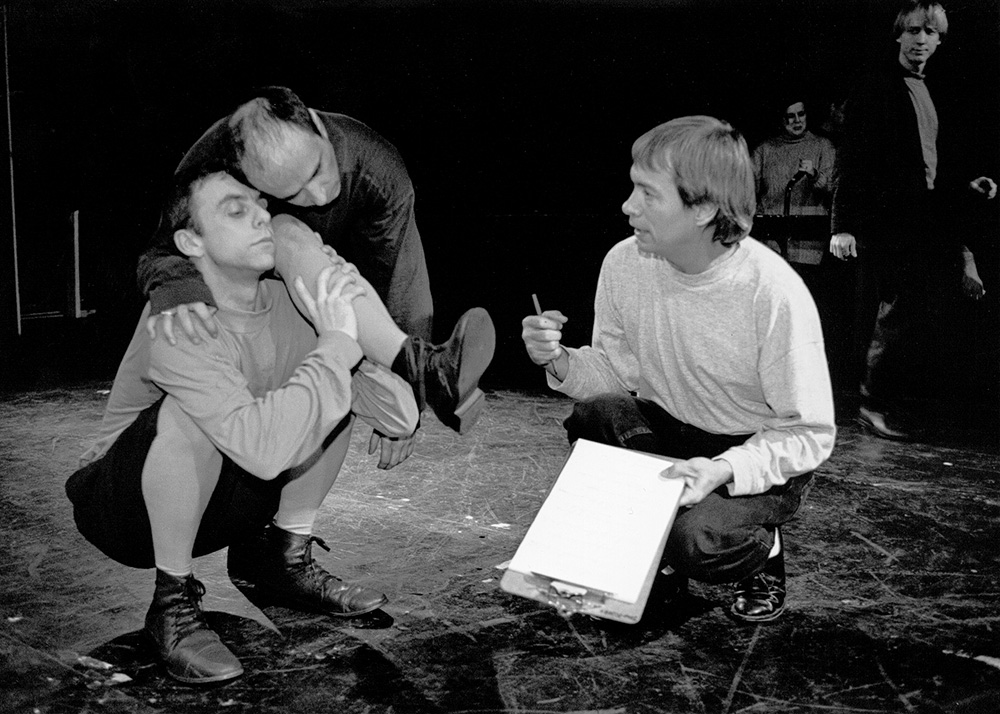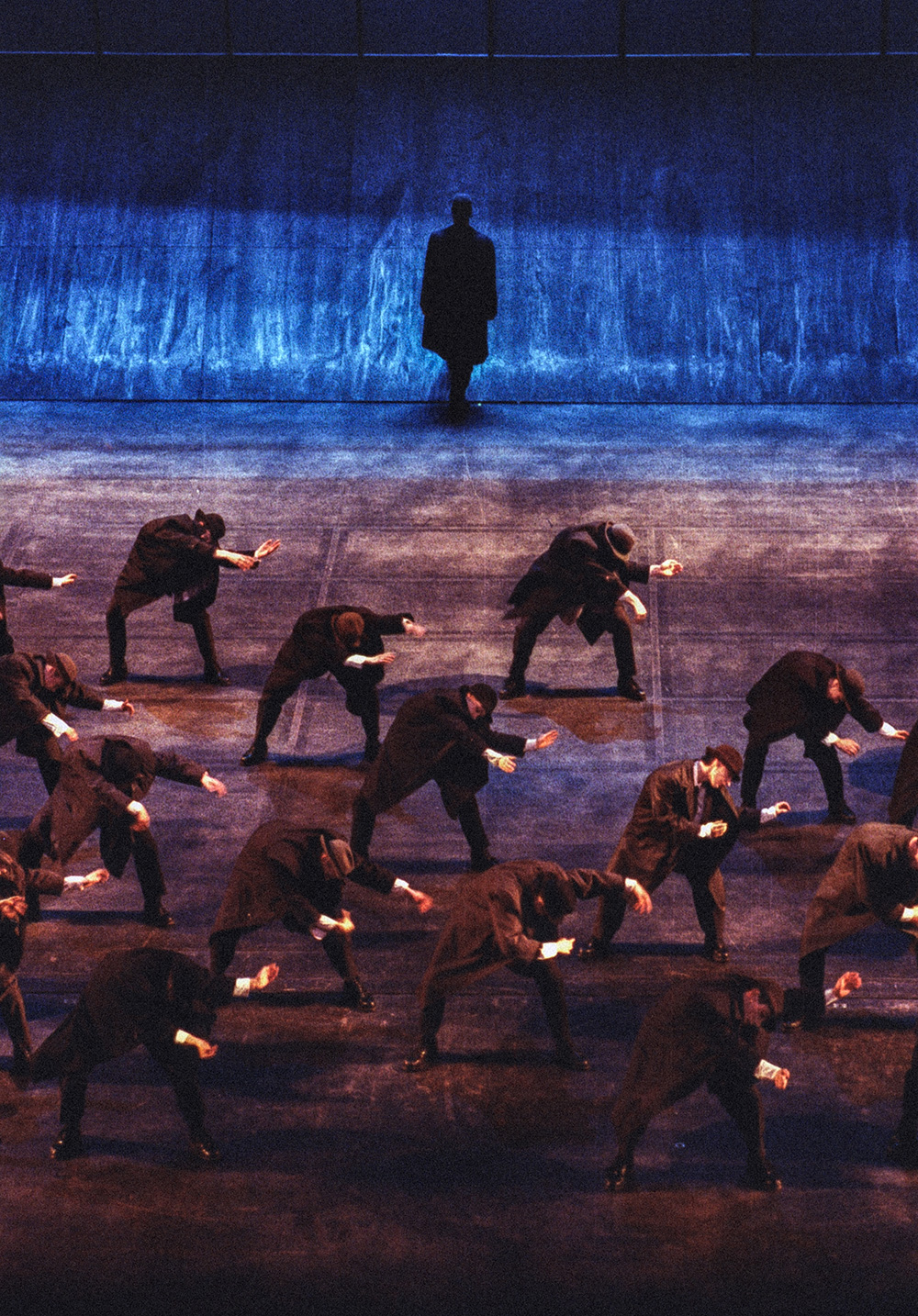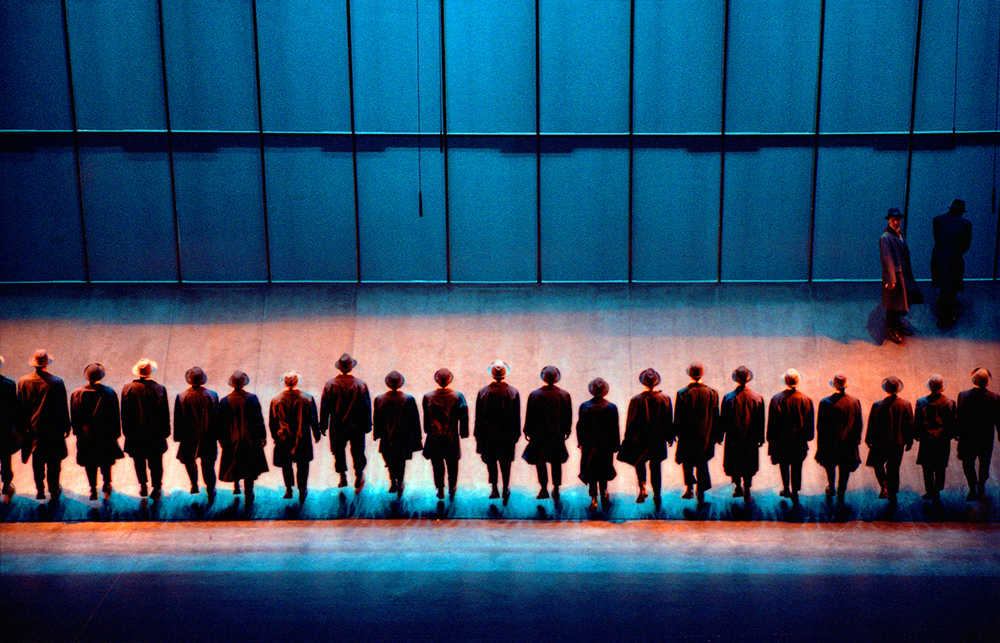If you wanted to see Jean-Pierre Perreault’s legendary dance work Joe from every possible angle in a theatre, you would have to variously be in the audience, off in the wings, dangling high overhead from the rigging or even on stage.
But thanks to the wonders of cinematography, you can have all of these different perspectives in the filmed version.
The screening of Joe comes courtesy of a new initiative entitled Digidance — four different dance presenters from across Canada, including Vancouver’s DanceHouse that banded together to offer a series of online performances. The initiative kicked off with the livestreaming of Crystal Pite’s Body and Soul, created for the Paris Opera Ballet. Joe is the second presentation in the series, available to screen from March 17 to 23.
With the pandemic shutting down live performances, the idea came about as a solution to dance-starved audiences across Canada. More than any other artform dance has suffered, as venues closed, tours disappeared and in-person performances were cancelled.
But there is an upside to this cessation.
Dance films offer audiences a different way to see work, from new angles and perspectives, providing a pathway into the form that live shows can’t provide. Film can also present works that audiences never had access to before. During its touring life, Joe never made it to Vancouver.
An extraordinary piece of choreography often compared to other iconic breakthroughs like the Beatles’ White Album and or a Milan Kundera novel, Joe occupies the curious territory of being rarely seen and thus even more legendary. But unlike Kundera’s The Unbearable Lightness of Being, Joe is concerned with just the opposite, the heaviness of simply getting along.

Jean-Pierre Perreault, who passed away in 2002, created the work in 1983 with 24 dance students. The work was subsequently remounted in 1994 with professional dancers from Winnipeg's Contemporary Dancers, Toronto’s Dancemakers, as well as Perrault’s own company.
The conceit is straightforward, 32 different performers — everyman and everywoman types — dressed in battered fedoras and long grey overcoats march, trudge and stomp across a bare floor. Other than a slight ramp at the back of the stage, there isn’t further embellishment or set design.
The sound of their footsteps, locked in percussive rhythm, give an emotive force to the work. Even if you close your eyes and listen, you can gauge the temperature of the action by the alternating waves of noise — thunderous roar versus sibilant scrape as the dancers drag their feet across the floor. It’s one-part fascist goosestep, and two parts desperate whisper for help.
In revisiting the work, words aren’t all that useful in summoning its more granular aspects. It’s easy to fall into euphemistic analogies — dancers as birds, as automatons, as zombie proletariat — or worse to simply describe what is happening onstage. Now they are running in circles, now one breaks away and the others chase them down. That man picked up that other man, but then they both fell over.
As a non-narrative form, there’s no story or plot synopsis to speed things along. You simply have to see the stuff.
But here is where film succeeds in better capturing the essence of a work, pairing cinematic language with choreography. This is especially apparent in Joe where the ideas embedded in the choreographic vocabulary are translated through shot structure. The fusion of the two artforms, cinematography and choreography, waltz along together with ease, neither one supplanting the other but moving together with easy grace.
The film version of Joe was produced for Radio-Canada in 1995 and involved some five different placements. The bird’s-eye view fluctuates with closeups of the performers, offering both a global perspective as well as fleeting glimpse of strained faces and fluttering limbs.

It is interesting to revisit the work in filmed form, more than two decades after it was made. The good news is that Joe more than holds up, and also that it speaks to the current moment.
As the dancers scramble up and slide down the ramp at the back of the stage, the endless repetition of human effort to get somewhere they think might be better, only to slip back into conformity and control once more reminded me of Adam Curtis’s epic documentary series Can’t Get You Out of My Head. Throughout his body of work, Curtis uses dance as a metaphor for the rise and fall of human history.
Other artists have deployed dance as a different way to tell stories and capture all the writhing weirdness of the human experience.
Long before COVID wiped the stage, dance films carved out a niche for themselves, with festival events like New York’s Dance on Camera presenting remarkable work.
Then are dance companies such (La)Horde who make work specifically to be filmed. There are also legions of dance documentaries on super-duper stars like Misty Copeland and Sergei Polunin, as well as films about pioneering choreographers like Bill T. Jones, Batsheva Dance Company’s Ohad Naharin and flamenco powerhouse Rocio Molina.
The very best dance films defy easy categorization and become works of art unto themselves. Rare creatures like Chantal Akerman’s One Day Pina Asked…, which looks at the ferocious German choreographer through the minds and bodies of the dancers that she worked with.
Dance as horror even had a moment with Gaspar Noé’s Climax and the remake of Suspiria.
The film version of Joe isn’t overwrought as some of these other productions, but it captures and immortalizes a masterpiece of Canadian dance with precision and an artfulness all its own.
Joe will be available to screen March 17 to 23 through DanceHouse in Vancouver. ![]()
Read more: Film

















Tyee Commenting Guidelines
Comments that violate guidelines risk being deleted, and violations may result in a temporary or permanent user ban. Maintain the spirit of good conversation to stay in the discussion.
*Please note The Tyee is not a forum for spreading misinformation about COVID-19, denying its existence or minimizing its risk to public health.
Do:
Do not: